112/2/D4
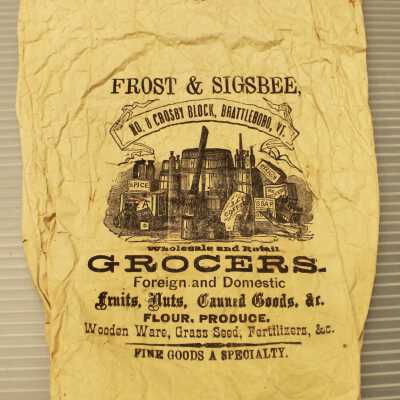
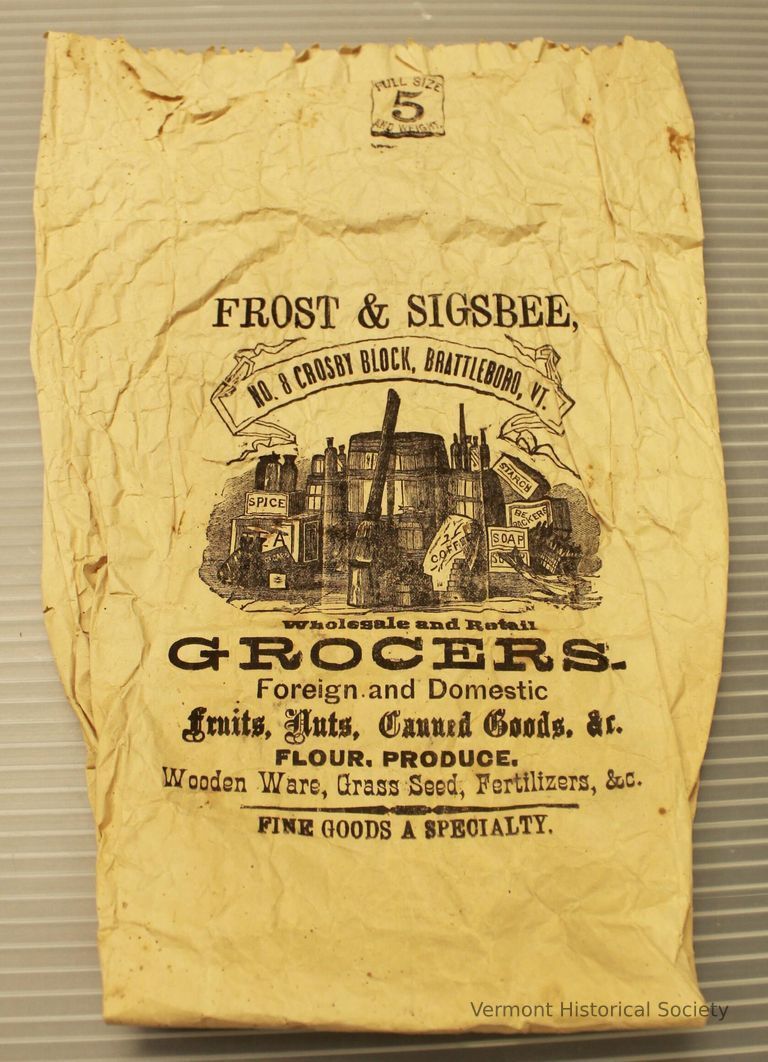
Bag
Name/Title
Bag
Lexicon
Description
Paper bag from Frost & Sigsbee, Brattleboro. Beige paper with black lettering and a graphic which shows objects found in a drygoods store at the time: barrel, bags of rice, soap, coffee, and bottles. Top edge is scalloped and stamped: Full size / 5 / and weight.
Wording on the front of the bag: Frost & Sigsbee / No. 8 Crosby Block, Brattleboro, Vt. / wholesale and retail grocers / foreign and domestic / fruits, nuts, canned goods, &x. / flour, produce / wooden ware, grass seed, fertilizers, &c. / fine goods a specialty.
Also text on the back (see photo)
Wording on the front of the bag: Frost & Sigsbee / No. 8 Crosby Block, Brattleboro, Vt. / wholesale and retail grocers / foreign and domestic / fruits, nuts, canned goods, &x. / flour, produce / wooden ware, grass seed, fertilizers, &c. / fine goods a specialty.
Also text on the back (see photo)
Acquisition
Accession
1992.71
Made/Created
Manufacturer
Frost & Sigsbee
Dimensions
Materials
Material
Paper
Entry/Object ID
1992.71.2
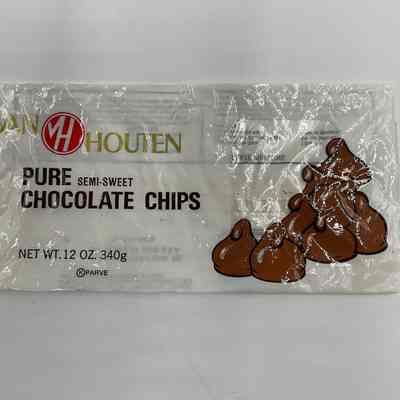
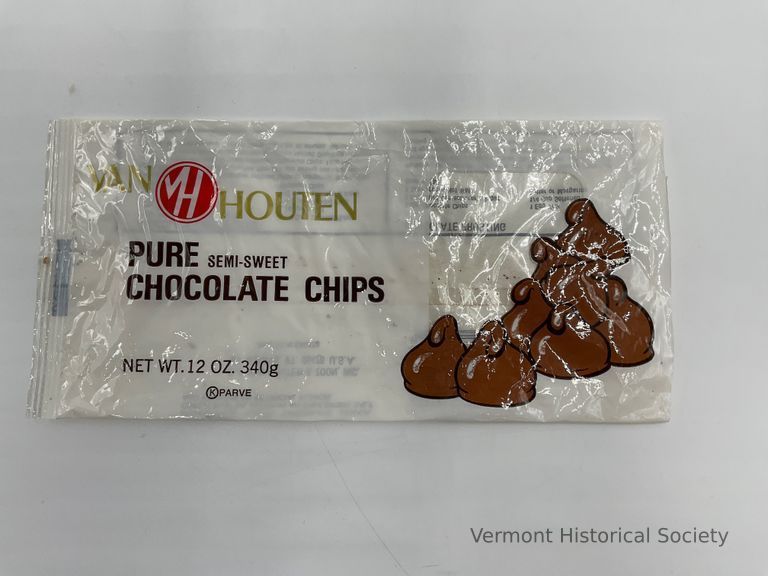
Bag
Name/Title
Bag
Lexicon
Description
A white, 12-ounce bag for chocolate chips produced at the Van Houten & Zoon plant in St. Albans, Vermont.
Acquisition
Accession
1991.53
Relationships
Related Places
Place
St. Albans Town
Town
Franklin County
County
Vermont
State/Province
United States of America
Country
North America
Made/Created
Manufacturer
C.J. Van Houten & Zoon
Dimensions
Materials
Material
Plastic
Entry/Object ID
1991.53.2
Context
An article from United Press International in 1982 said that Comet Confecionery of St. Hyacinthe, Quebec, planned to open a chocolate chip plant in St. Albans beginning in 1983. It would be called C.J. Van Houten & Zoon. The Van Houten family got into the chocoate business in 1815 in Amsterdam, Netherlands.
From https://www.vanhoutenchocolates.com/vanhouten/vanhouten/en_ph/about.html
Among the chocolate brands available today, few can claim a legacy that goes back over 180 years. Van Houten has been manufacturing cocoa powder since 1828, when its founder, Coenraad Van Houten, pioneered a process to manufacture cocoa in Amsterdam, Holland. The result was a tastier and more soluble cocoa powder which spurred the growth of the hot chocolate drink industry.
Cocoa mass was treated with alkaline salts to remove the bitter taste and make cocoa solids more water-soluble; the resulting product is called “Dutch process” chocolate. Today, this process is known as “Dutching”. The final product, Dutch chocolate, has a dark color and a mild taste.
Riding on its success, Van Houten expanded rapidly and by the end of the 19th century, it had expanded into the United Kingdom, the United States, France and Germany. By then, the Van Houten name was synonymous with high quality cocoa powder.
Van Houten’s discovery, also paved the way for the subsequent manufacture of the chocolate bar. This eventually made volume production of chocolates possible and also made chocolates affordable, a fact that Chocolate lovers today are blissfully unaware of – as they can indulge in chocolates so easily whenever they like. and had expanded and opened a branch operation in New York in 1890.
From https://www.vanhoutenchocolates.com/vanhouten/vanhouten/en_ph/about.html
Among the chocolate brands available today, few can claim a legacy that goes back over 180 years. Van Houten has been manufacturing cocoa powder since 1828, when its founder, Coenraad Van Houten, pioneered a process to manufacture cocoa in Amsterdam, Holland. The result was a tastier and more soluble cocoa powder which spurred the growth of the hot chocolate drink industry.
Cocoa mass was treated with alkaline salts to remove the bitter taste and make cocoa solids more water-soluble; the resulting product is called “Dutch process” chocolate. Today, this process is known as “Dutching”. The final product, Dutch chocolate, has a dark color and a mild taste.
Riding on its success, Van Houten expanded rapidly and by the end of the 19th century, it had expanded into the United Kingdom, the United States, France and Germany. By then, the Van Houten name was synonymous with high quality cocoa powder.
Van Houten’s discovery, also paved the way for the subsequent manufacture of the chocolate bar. This eventually made volume production of chocolates possible and also made chocolates affordable, a fact that Chocolate lovers today are blissfully unaware of – as they can indulge in chocolates so easily whenever they like. and had expanded and opened a branch operation in New York in 1890.
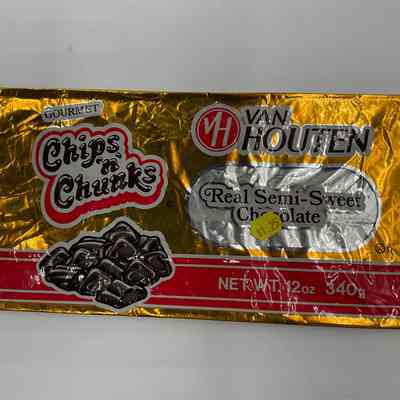
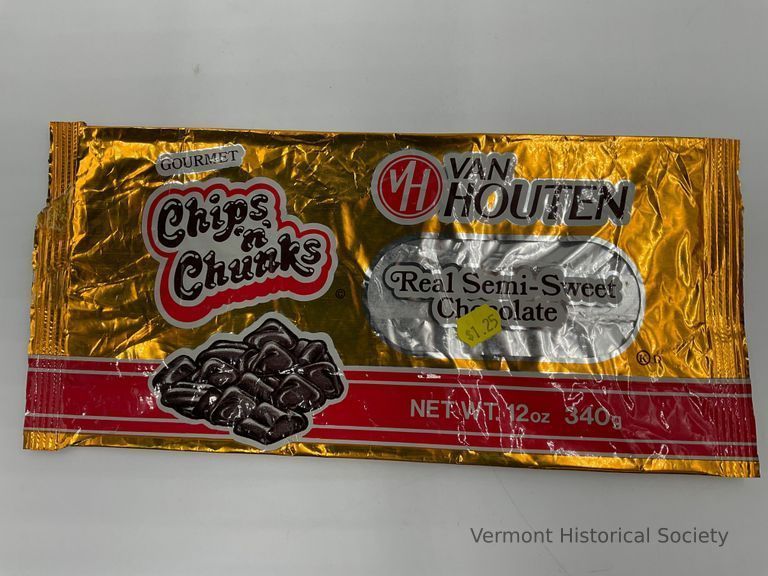
Bag
Name/Title
Bag
Lexicon
Description
Gold, red and brown package for chocolate chips -- 12 ounce --
C. J. Van Houten and Zoon, Inc. ; St. Albans, VT
C. J. Van Houten and Zoon, Inc. ; St. Albans, VT
Acquisition
Accession
1991.53
Relationships
Related Places
Place
St. Albans Town
Town
Franklin County
County
Vermont
State/Province
United States of America
Country
North America
Made/Created
Manufacturer
C.J. Van Houten & Zoon
Dimensions
Materials
Material
Plastic
Entry/Object ID
1991.53.3
Context
An article from United Press International in 1982 said that Comet Confecionery of St. Hyacinthe, Quebec, planned to open a chocolate chip plant in St. Albans beginning in 1983. It would be called C.J. Van Houten & Zoon. The Van Houten family got into the chocoate business in 1815 in Amsterdam, Netherlands.
From https://www.vanhoutenchocolates.com/vanhouten/vanhouten/en_ph/about.html
Among the chocolate brands available today, few can claim a legacy that goes back over 180 years. Van Houten has been manufacturing cocoa powder since 1828, when its founder, Coenraad Van Houten, pioneered a process to manufacture cocoa in Amsterdam, Holland. The result was a tastier and more soluble cocoa powder which spurred the growth of the hot chocolate drink industry.
Cocoa mass was treated with alkaline salts to remove the bitter taste and make cocoa solids more water-soluble; the resulting product is called “Dutch process” chocolate. Today, this process is known as “Dutching”. The final product, Dutch chocolate, has a dark color and a mild taste.
Riding on its success, Van Houten expanded rapidly and by the end of the 19th century, it had expanded into the United Kingdom, the United States, France and Germany. By then, the Van Houten name was synonymous with high quality cocoa powder.
Van Houten’s discovery, also paved the way for the subsequent manufacture of the chocolate bar. This eventually made volume production of chocolates possible and also made chocolates affordable, a fact that Chocolate lovers today are blissfully unaware of – as they can indulge in chocolates so easily whenever they like. and had expanded and opened a branch operation in New York in 1890.
From https://www.vanhoutenchocolates.com/vanhouten/vanhouten/en_ph/about.html
Among the chocolate brands available today, few can claim a legacy that goes back over 180 years. Van Houten has been manufacturing cocoa powder since 1828, when its founder, Coenraad Van Houten, pioneered a process to manufacture cocoa in Amsterdam, Holland. The result was a tastier and more soluble cocoa powder which spurred the growth of the hot chocolate drink industry.
Cocoa mass was treated with alkaline salts to remove the bitter taste and make cocoa solids more water-soluble; the resulting product is called “Dutch process” chocolate. Today, this process is known as “Dutching”. The final product, Dutch chocolate, has a dark color and a mild taste.
Riding on its success, Van Houten expanded rapidly and by the end of the 19th century, it had expanded into the United Kingdom, the United States, France and Germany. By then, the Van Houten name was synonymous with high quality cocoa powder.
Van Houten’s discovery, also paved the way for the subsequent manufacture of the chocolate bar. This eventually made volume production of chocolates possible and also made chocolates affordable, a fact that Chocolate lovers today are blissfully unaware of – as they can indulge in chocolates so easily whenever they like. and had expanded and opened a branch operation in New York in 1890.
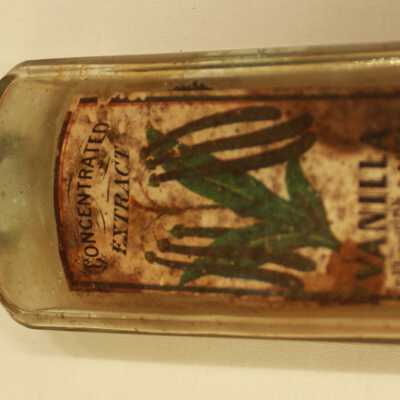
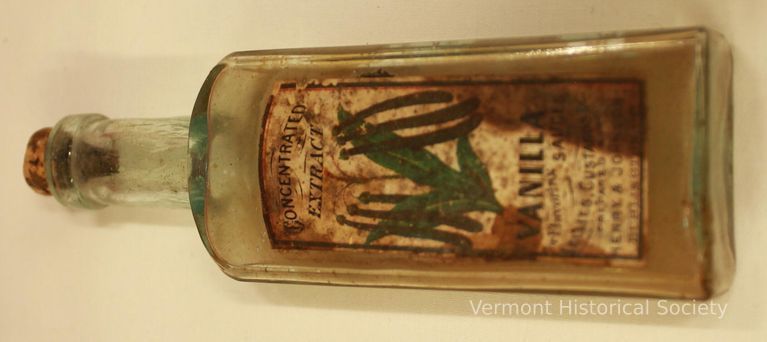
Bottle
Name/Title
Bottle
Lexicon
Description
Vanilla bottle, green glass - Henry & Johnson, Burlington. Color paper label on the front; blank on the back; cork stopper; lip on top of neck at the opening.
Wording on label: Concentracted extract / vanilla for flavoring sauces, jellies, custards, &c / prepared by Henry & Johnson / Burlington, VT
Wording on label: Concentracted extract / vanilla for flavoring sauces, jellies, custards, &c / prepared by Henry & Johnson / Burlington, VT
Acquisition
Accession
1992.71
Made/Created
Date made
1870-1880
Manufacturer
Henry & Johnson
Dimensions
Materials
Material
Glass, Paper, Cork
Entry/Object ID
1992.71.1
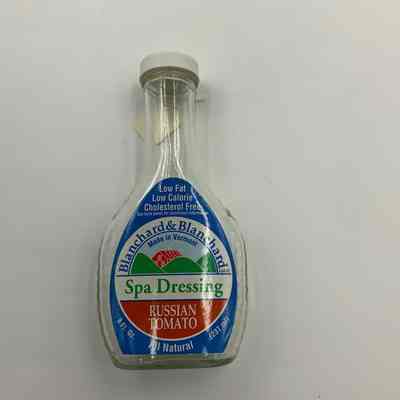
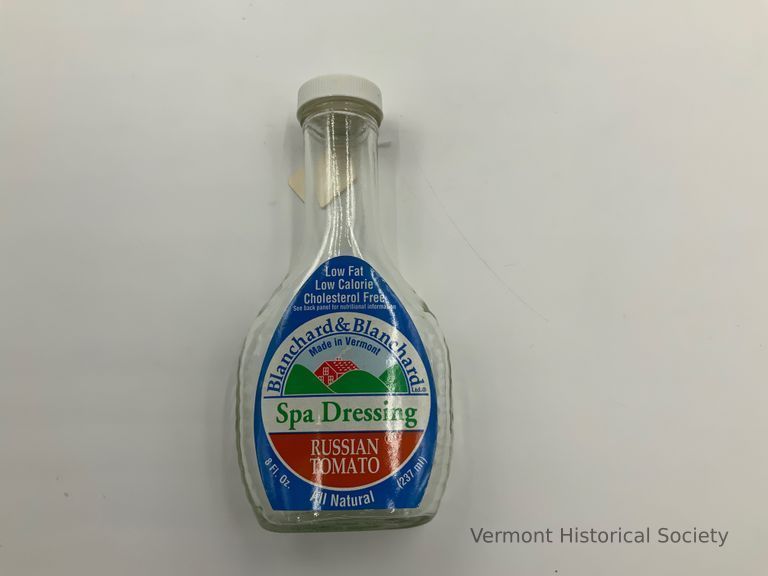
Bottle
Name/Title
Bottle
Lexicon
Description
A Blanchard & Blanchard salad dressing bottle from a product produced in Norwich, Vt. The clear bottle has a blue label reading from top to bottom: Low Fat, Low Calorie, Cholesterol Free, See back panel for nutritional information, Blanchard & Blanchard, Made in Vermont, Spa Dressing, Russian Tomato, 8 Fl. Oz, All Natural, 237 ml.
The other side has detailed ingredients and a nutritional fact chart.
The other side has detailed ingredients and a nutritional fact chart.
Acquisition
Accession
1996.4
Made/Created
Manufacturer
Blanchard & Blanchard, Ltd.
Dimensions
Dimension Description
Overall
Materials
Material
Plastic, Glass
Entry/Object ID
1996.4.1
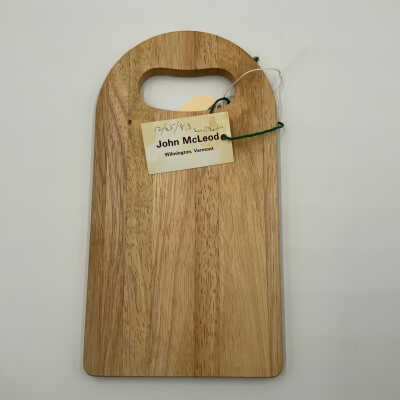
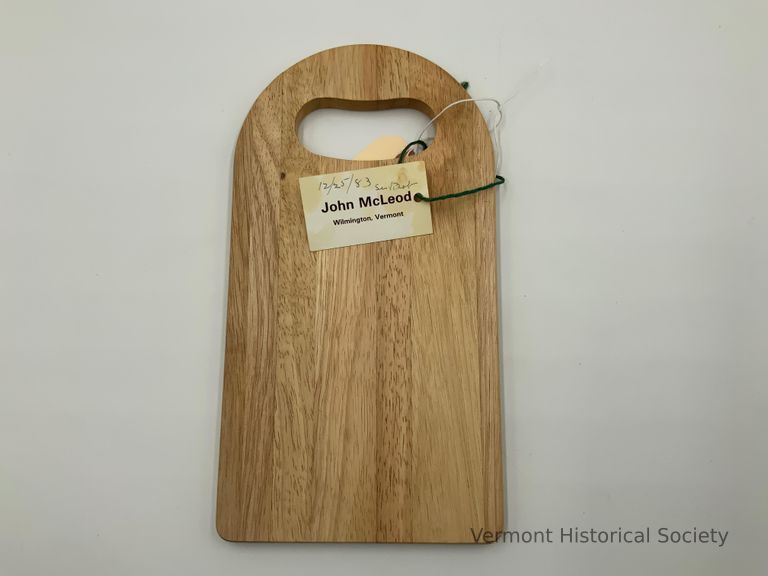
Cutting board
Name/Title
Cutting board
Description
A hardwood cutting board made by John McLeod of Wilmington, Vermnont.
Acquisition
Accession
2003.73
Relationships
Related Person or Organization
Phipard, Charles Willard (1916-2002)
Person or Organization
Related Places
Place
Royalton
Town
Windsor County
County
Vermont
State/Province
United States of America
Country
North America
Dimensions
Materials
Material
Wood
Entry/Object ID
2003.73.60
Context
Owned by Charles Willard Phipard of Royalton, Vermont

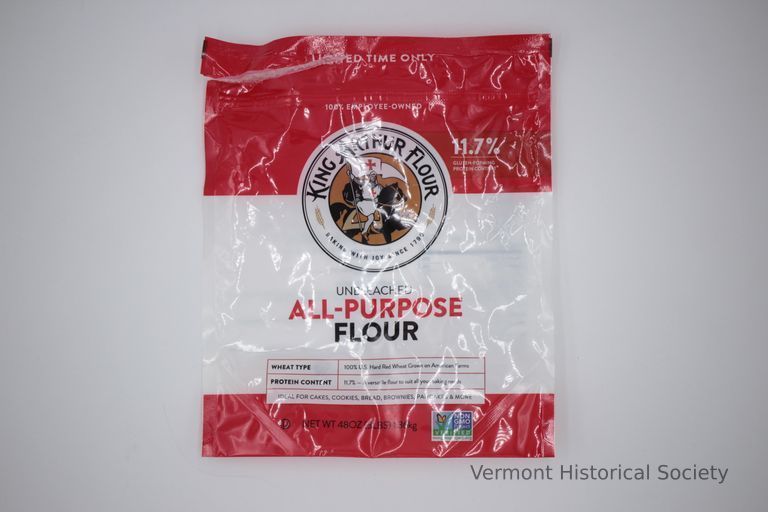
Flour Bag
Name/Title
Flour Bag
Lexicon
Description
Zip-top plastic bag. The bag is red and white with the label, "UNBLEACHED ALL-PURPOSE FLOUR". It has a large label showing a crusader surrounded by the inscription, "King Arthur Flour". The back of the bag is printed with nutritional information and a note saying, "During these unprecedented times, and as we work to restock stores around the country, we're finding new ways to supply you with flour so that you can keep baking. To help bridge the gap until stores are restocked nationwide, we're offering this 3lb. bag of flour for a limited time."
Acquisition
Accession
2020.27
Relationships
Related Events
Covid-19 Pandemic
Event
Made/Created
Date made
2020
Manufacturer
King Arthur Baking Company
Entry/Object ID
2020.27.1
Context
Made by King Arthur Flour as a response to nation-wide flour shortages at the beginning of the Covid-19 pandemic.
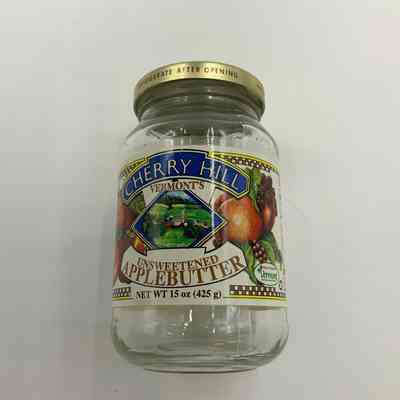
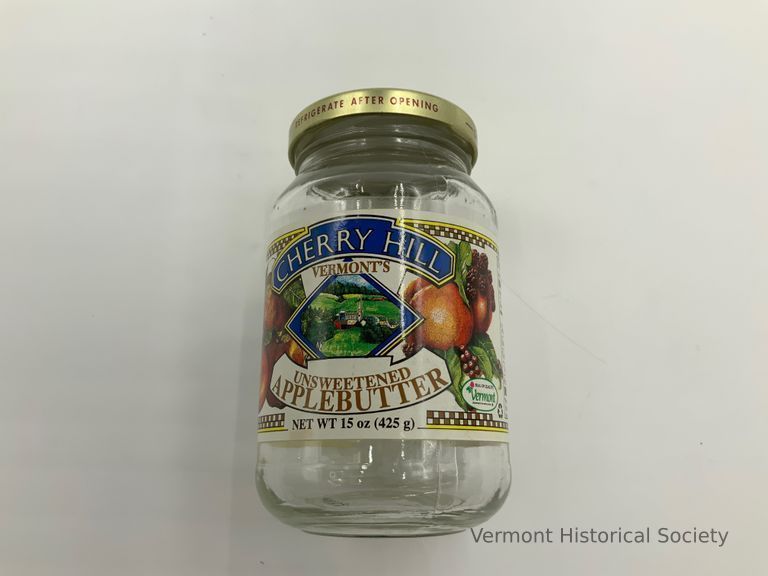
Jar
Name/Title
Jar
Lexicon
Description
A jar of Cherry Hill unsweetened apple butter. Cherry Hill is listed on the label as a worker owned cannery on the Barre Montpelier Road in Barre, Vermont.
Use
Can be spread on bread as a condiment or on waffles or eaten straights from the jar.
Acquisition
Accession
1996.4
Made/Created
Manufacturer
Cherry Hill Cannery Inc.
Dimensions
Dimension Description
Overall
Materials
Material
Glass, Metal
Entry/Object ID
1996.4.2
Context
Made by Cherry Hill in Barre, Vermont.
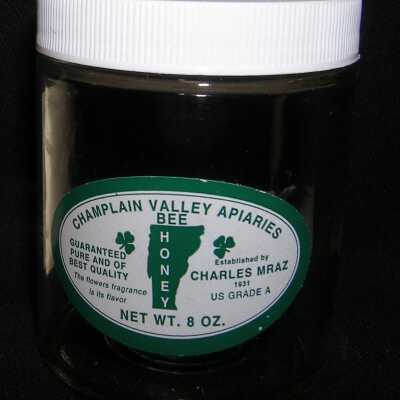
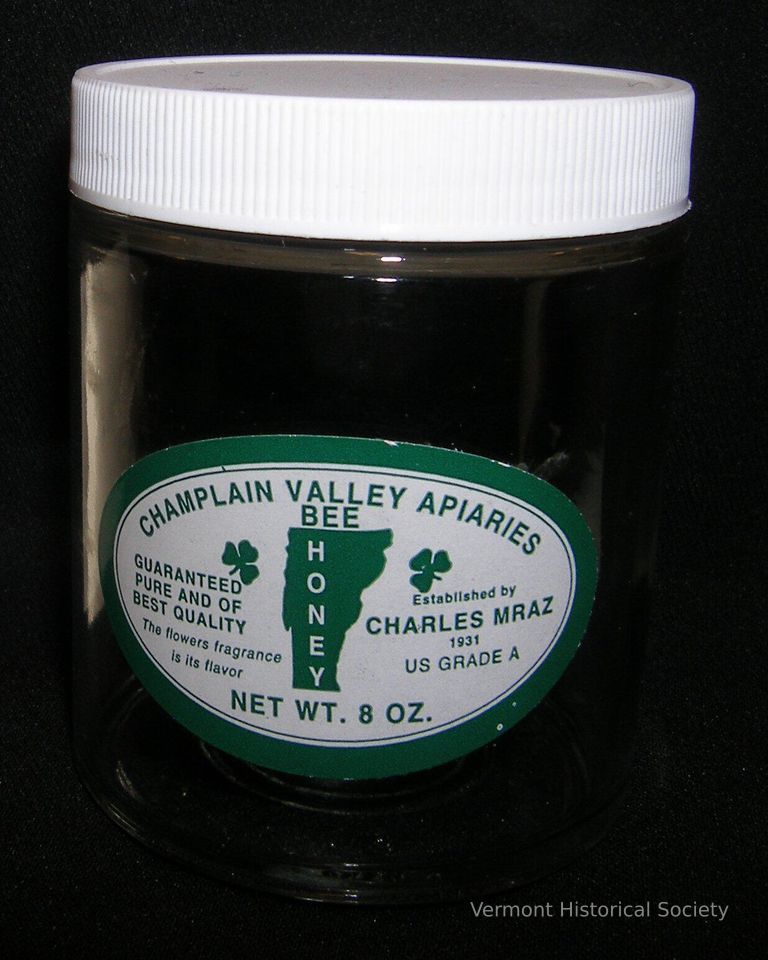
Jar, Honey
Name/Title
Jar, Honey
Lexicon
Description
Clear glass jar (a) with oval paper label;the label is white with a green border and states in green ink : "Champlain Valley Apiaries Bee Honey/Established by CHARLES MRAZ..."
The lid (b) is white plastic and screws onto the jar.
The lid (b) is white plastic and screws onto the jar.
Acquisition
Accession
2014.52
Dimensions
Materials
Material
Glass, Plastic
Entry/Object ID
2014.52.1a-b
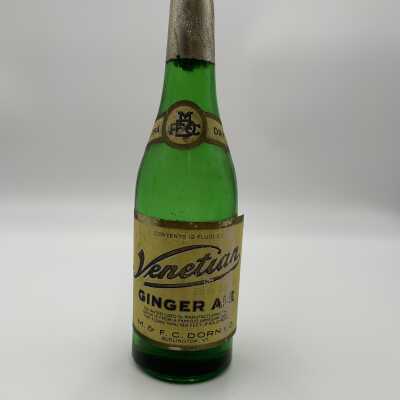
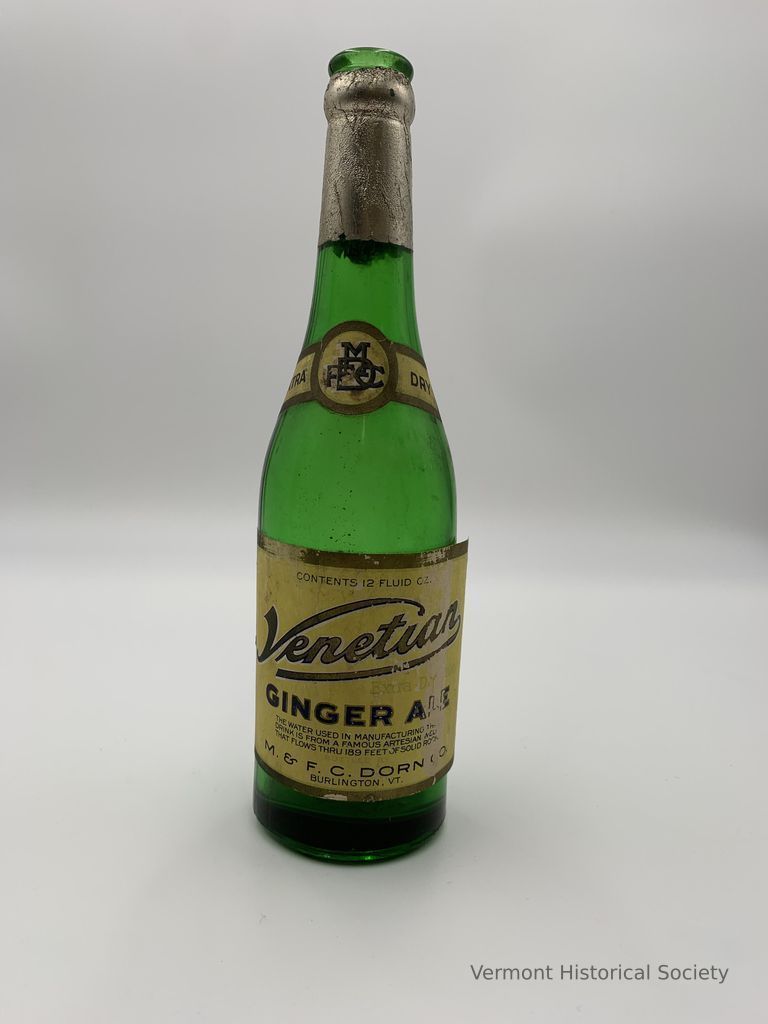
Soda Bottle
Name/Title
Soda Bottle
Lexicon
Description
A collection of 144 bottles and medicine bottles. Not individually cataloged yet but listed and described on a master list in worksheet file.
Acquisition
Accession
2004.78
Relationships
Related Places
Place
Montpelier
City
Washington County
County
Vermont
State/Province
United States of America
Country
North America
Made/Created
Manufacturer
DORN'S Venetian Beverages
Entry/Object ID
2004.78.123